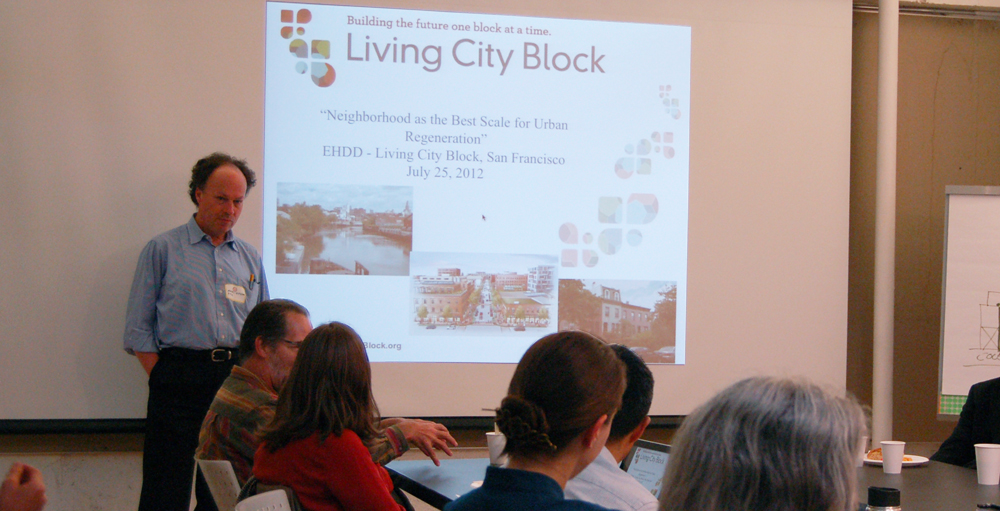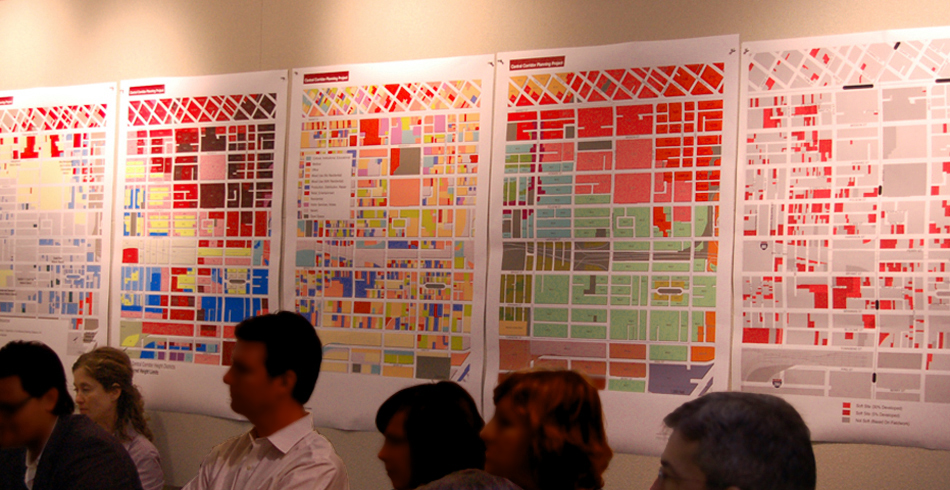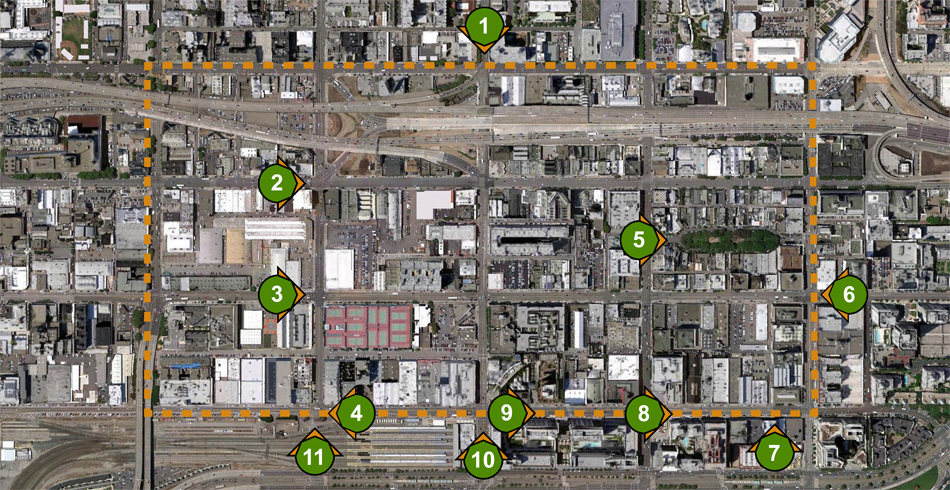Living City Block: San Francisco
In April 2012, I came across an interesting publication titled “Greening an Entire Block Instead of Just One Building” in The Atlantic Cities online journal. The vision of sustainability on a community scale, described in this article, seemed to be a natural fit with EHDD’s mission to imagine a greater future through sustainable design. This encouraged me to reach out to Llewellyn Wells, Founder at Living City Block, to find out how I as an architect and we as a firm could be part of this initiative. Llewellyn suggested a gathering of like-minded professionals from different industries within San Francisco with vested interests in promoting sustainable communities, and with that, the idea for a workshop was conceived.
Not surprisingly the response to the workshop held at EHDD in July was overwhelming. City officials from planning, energy and green building departments, utility officials, local NGOs, bankers, real estate professionals, engineering and design firms and venture capital firms all responded promptly to our invitation and were present at this first public/private discussion on urban regeneration possibilities at a neighborhood scale in San Francisco. EHDD was represented by Michel St. Pierre, Pramod Sanoor and Ruth Kurz.
The concept of Living City Block focuses on neighborhoods that do not receive a lot of attention from commercial markets, or do not have the resources, know-how and the financial ability to take advantage of utility rebates, government schemes, and tax relief because of their small size. Living City Block’s aggregation based methodology enables the stakeholders to accomplish things together that they cannot achieve as individuals on their own. The initial goal is to use this aggregation model to help cut the energy consumption of an entire community by at least 50% with the help of energy efficient improvements, and then use proven and cutting edge green technologies effectively to create a community that produces more energy than it consumes. Eventually the aspiration is to go beyond the energy goals, and use community connectivity and new technologies to create a resource efficient, self-sustaining and thriving community that has the potential to be transformative well beyond the site.
Applying this aggregation model, over 30 professionals from across the Bay Area brainstormed sustainability and urban revitalization possibilities for existing San Francisco neighborhoods. To examine how this program might best suit the Bay Area, we discussed the application of this model to 12 blocks between Townsend & Harrison and 2nd & 6th streets, in the SOMA district, which is within the proposed Central Corridor Project, a redevelopment plan by the San Francisco Planning Department.
Llewellyn and his colleague Chad Riley walked us through the Living City Block mission, vision and the bigger picture with precedents and examples of their ongoing pilot Living City Block projects in Denver and Brooklyn. An extremely thought provoking discussion ensued as we analyzed the opportunities for our ‘strawman’ Living City San Francisco, keeping in mind a realistic picture for retrofits against new construction. We examined existing San Francisco area programs, and how these can be integrated with a Living City Block type methodology. The San Francisco Planning Department presented goals and opportunities for sustainable development in the San Francisco Central Corridor. The San Francisco Department of Environment explained the open market model for the PACE financing program for building retrofits. The San Francisco Public Utilities Commission presented water ordinance and water efficiency. Sherwood Engineers discussed their pioneering projects in San Francisco known for their distributed generation and energy efficiency measures.
For the last part of the workshop, we broke into smaller groups to contemplate ideas for programmatic work for the selected site in SOMA. The participants were assigned to four distinct focus groups to discuss possibilities for energy, water and waste, a livable community, and equitable economic development. The group activities generated hundreds of ideas for potential projects at the selected site.
The workshop was a stimulating discourse with dynamic presenters that covered community interests ranging from resource efficiency, distributed systems, aggregation governance, finance, policy, mixed-use zoning, affordable housing, crime and safety, community based planning and design, community identity, urban agriculture, new technologies an green infrastructure. The enthusiasm of the participants is the key to the success of this initiative as they brought new ideas and experience, new perspectives and connections which I am sure will help us implement a Living City Block here in San Francisco. EHDD looks forward to partnering with Living City Block and revitalizing the urban fabric of San Francisco, one block at a time!
Pramod Sanoor
Designer, LEED® AP BD+C


